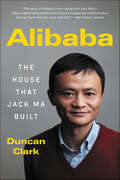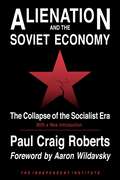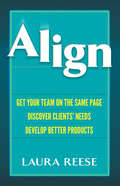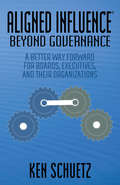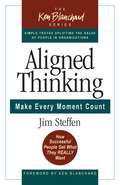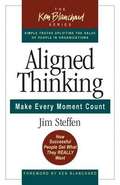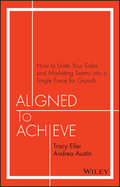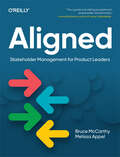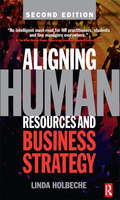- Table View
- List View
Alibaba: The House That Jack Ma Built
by Duncan ClarkIn just a decade and half Jack Ma, a man who rose from humble beginnings and started his career as an English teacher, founded and built Alibaba into the second largest Internet company in the world. The company’s $25 billion IPO in 2014 was the world’s largest, valuing the company more than Facebook or Coca Cola. Alibaba today runs the e-commerce services that hundreds of millions of Chinese consumers depend on every day, providing employment and income for tens of millions more. A Rockefeller of his age, Jack has become an icon for the country’s booming private sector, and as the face of the new, consumerist China is courted by heads of state and CEOs from around the world.Granted unprecedented access to a wealth of new material including exclusive interviews, Clark draws on his own first-hand experience of key figures integral to Alibaba’s rise to create an authoritative, compelling narrative account of how Alibaba and its charismatic creator have transformed the way that Chinese exercise their new found economic freedom, inspiring entrepreneurs around the world and infuriating others, turning the tables on the Silicon Valley giants who have tried to stand in his way. Duncan explores vital questions about the company’s past, present, and future: How, from such unremarkable origins, did Jack Ma build Alibaba? What explains his relentless drive and his ability to outsmart his competitors? With over 80% of China’s e-commerce market, how long can the company hope to maintain its dominance? As the company sets its sights on the country’s financial and media markets, are there limits to Alibaba’s ambitions, or will the Chinese government act to curtail them? And as it set up shop from LA and San Francisco to Seattle, how will Alibaba grow its presence and investments in the US and other international markets?Clark tells Alibaba’s tale within the wider story of China’s economic explosion—the rise of the private sector and the expansion of Internet usage—that haver powered the country’s rise to become the world’s second largest economy and largest Internet population, twice the size of the United States. He also explores the political and social context for these momentous changes. An expert insider with unrivaled connections, Clark has a deep understanding of Chinese business mindset. He illuminates an unlikely corporate titan as never before, and examines the key role his company has played in transforming China while increasing its power and presence worldwide.
Alibris (A)
by Andrew Mcafee Kerry HermanAlibris is an Internet-era company providing search and fulfillment services for hard-to-find (rare, used, and out-of-print) books. At the time of the case, the company had made decisions to change its revenue model, to become involved in the fulfillment process for each book it sells by establishing a cross-dock facility, and to purchase Oracle's Internet commerce software. However, the implementation of this software has been very difficult, delaying the launch of the new fulfillment business and costing large amounts of money at a time when cash is scarce. The company's leaders, who are not IT professionals, must decide whether to continue with Oracle or begin anew with another product.
Alibris (B)
by Andrew McafeeTakes place more than two years after the (A) case. Alibris has weathered the storms and has built a popular, growing business. As the Christmas season of 2000 approaches, the company is confronted with two IT projects that both seem urgent and important. The first is an effort to replace the software tool used by book dealers and others to upload their listing to the Alibris database. The current tool is error prone and does not provide rich information about each book uploaded. This lack of rich information makes useful searches of the Alibris database difficult. The second project involves ensuring the integrity of the database itself. Recent evidence suggests that records are not being uploaded, updated, and deleted as they should be in all cases, with adverse effects for customers. Alibris must decide which of the two projects to pursue immediately. There are not enough resources to do both.
Alibris in 2004
by Andrew McafeeAlibris, an online marketplace for rare, used, and out-of-print books, is trying to communicate to the professional book dealers who are its main suppliers that they are in the middle of a crisis. Supply is flooding the market, in part from individuals who simply want to clean out their bookshelves and make a bit of money. These individuals' sales are facilitated by a number of online merchants, including Alibris, Half.com, Amazon.com, and eBay. Alibris has built a number of powerful capabilities to help both buyers and sellers of books. Among these is a pricing service that allows sellers to set market prices for their books automatically. Alibris wants to encourage its dealers to use this service: the problem is that most market prices are far below the prices dealers have set for their books.
Alicia Keys
by Boris Groysberg Annelena Lobb Sarah MehtaThis case explores the life and career of Alicia Keys, the 15-time Grammy winning singer-songwriter and producer. Set in 2019, it covers the evolution of Keys's 18-year musical career and additional passions, including acting, entrepreneurship, social justice activism, and collecting art with her husband, rapper and music producer Swizz Beatz. Now a mother of two young sons and with no intentions of slowing down, Keys considers what the next phase of her life and career might hold. This case would be useful for students studying the music and entertainment industry. It also holds relevance for executives approaching the peak of their career and looking to make more deliberate decisions about time management and prioritization.
Alienating Labour: Workers on the Road from Socialism to Capitalism in East Germany and Hungary (International Studies in Social History #22)
by Eszter BarthaThe Communist Party dictatorships in Hungary and East Germany sought to win over the “masses” with promises of providing for ever-increasing levels of consumption. This policy—successful at the outset—in the long-term proved to be detrimental for the regimes because it shifted working class political consciousness to the right while it effectively excluded leftist alternatives from the public sphere. This book argues that this policy can provide the key to understanding of the collapse of the regimes. It examines the case studies of two large factories, Carl Zeiss Jena (East Germany) and Rába in Győr (Hungary), and demonstrates how the study of the formation of the relationship between the workers’ state and the industrial working class can offer illuminating insights into the important issue of the legitimacy (and its eventual loss) of Communist regimes.
Alienation and the Soviet Economy: The Collapse of the Socialist Era
by Paul Craig RobertsIn 1971, Paul Craig Roberts created a firestorm among professional Sovietologists by proclaiming that the economies of the USSR and its East Bloc allies were doomed because their "planned" economies were, in reality, anything but planned.In this revised edition, Paul Craig Roberts examines how reality triumphed over Marxist theory and the implications for the future of Russia and eastern Europe. Expanding on his original ideas, Roberts demonstrates the fatal shortcomings of Marxist economies, ranging from misallocation of resources to ersatz capitalistic concepts grafted onto a system that calls for production without regard to profit. Roberts argues that the economies of the nations emerging from the USSR&’s collapse must grasp the profound truths in this book if they are to become viable.
Align Technology, Inc.: Matching Manufacturing Capacity to Sales Demand
by H. Kent Bowen Jonathan P. GrobergAlign Technology is a four-year-old medical products company that has invented a new product requiring new manufacturing processes. Demand for the new product has grown more slowly than initial forecasts predicted, and the cost structure is preventing the company from becoming profitable. The manufacturing process involves six different operations located in California, Pakistan, and Mexico. The first dilemma requires downsizing the capacity until the demand grows. Increasing capacity in the future requires consideration of the time lags, costs, and incremental units of added capacity inherent in each of the six processes. Given the uncertainty of accurate sales forecasts as the company carries out new marketing initiatives, the manufacturing organization has been challenged to create a capacity plan to meet demand while lowering its fixed costs.
Align Your Incentives to Focus on Profit
by Hermann Simon Frank F. Bilstein Frank LubyA common corporate shortcut is to reward salespeople primarily on how much they sell or how much revenue they bring in. This shortcut often encourages behavior that can destroy your profits or undermine your efforts to increase them. It trains salespeople to ask their superiors for lower prices instead of negotiating with customers for higher ones. To retrieve the higher profits they deserve, companies need to make the transition from volume-based sales incentive systems to profit-based ones. This applies to your own sales representatives and to your channel partners, who act as your agents to the end customer.
Align the Practical Realities: Generation Y--Shaping Your Personal Career Strategy
by Tamara EricksonDuring your job search, you will have to home in on the practical realities of your specific situation. How much money do you need to make? How much time can you devote to work? What level of responsibility do you want? If they don't align with your biggest dreams, you may need to prioritize your wants and needs and decide which concessions to make as you start you career. In this chapter, the author offers a framework for organizing your thoughts on these realities, along with two stories of Gen Y's who are in the midst of wrestling with these trade-offs.
Align: Get Your Team on the Same Page, Discover Clients' Needs, Develop Better Products
by Laura Marie ReeseUnderstanding what customers want is neither easy nor obvious — but it is essential for all companies. In this guide, expert Laura Reese walks you through the pitfalls and possibilities of customer interactions. Focusing on business-to-business fields, she demonstrates how to run face-to-face meetings that solicit valuable feedback and shares simple techniques for unlocking meaningful insights into a client's needs.You will learn how to cultivate an aligning mind-set within your company and among your own team by defining clear roles for each member. In addition to step-by-step guides for running customer alignment meetings, the book outlines specific skills for improving engagement with customers. Based on concepts of proven effectiveness, these tools will help transform a disparate group into a unified team of professionals working toward the same goal of discovering valuable customer insights."In the world of product development, be it semiconductors or anything else for that matter, big bets are placed on building the product the customer really needs. At Altera, Laura Reese energetically engaged on a mission to master the art of understanding what the customer really truly wants, digging through the layers of what to get to the far more valuable understanding of why. In this journey she developed a strategy for customer engagement to overcome the challenges of confirmation bias and other aspects of human nature-driven obstacles to the truth. In doing so, she created intellectual honesty in Altera's understanding of customers' needs, leading to some of the best products Altera has ever produced. The techniques she describes are applicable to any kind of uncovering exercise required to achieve an understanding of what is really required. I am delighted that she has been able to share her insights through this book." — Richard Cliff, CTO, Altera Corporation
Aligned Influence: Beyond Governance
by Ken SchuetzFor board members and executives, a clear path to organizational improvement.Within every organization is an “ecosystem” of influencers. In organizations with boards of directors and executives, that ecosystem is even more complex, and it is even more important to understand it for the benefit of everyone, including investors and donors.To date, governance models have provided little to no understanding of this ecosystem of influence, leaving this as an ongoing problem in organizations with the complexity of a board and executive. Governance experts have applied a number of inadequate solutions to a problem they still do not grasp. In Aligned Influence®, Ken Schuetz presents the Aligned Influence® model, which offers a unique perspective on this central problem—and a solution that addresses organizational alignment as a necessary prerequisite to effectiveness.
Aligned Thinking: Make Every Moment Count
by James SteffenToo much to do! I never get anything done! I have so little control over my life! These were thoughts Ray had as he headed home later for supper, confident his wife, Carol, would be sympathetic to his problem. One sentence into unloading his problems on her, he heard, "Too much to do? Tell me about it!" Her problems were as big as or even bigger than his. When they went to a friend for help, they discovered more than hope, "That sounds like us several years ago. But Coach Eric's Aligned Thinking not only solved those problems, it helped us to do what most people believe impossible: align every action to what we really want. With mild hope and huge skepticism, Ray and Carol visited Coach Eric and gave him a description of their ideal professional and personal life. Coach Eric assured them that Aligned Thinking could help them enjoy each item on their list. However, when he asked them to add to their list "make every moment count so life becomes a celebration," Ray and Carol became even more skeptical. Join Ray and Carol as they discover the proven power of Aligned Thinking.
Aligned Thinking: Make Every Moment Count
by Ken Blanchard Jim SteffenModern life is filled with frustrations -- too much work, too many interruptions, not enough personal time, and an increasing sense of losing control and meaning.The key lies in three questions: "How do I get the most from the only thing I control -- my actions now?"; "With the many options I have, how do I stay focused on what I really want?"; and "What do I really want from life and work?" Written in the style of a simple fable, the book invites readers to join Ray and Carol Walters as they learn to apply the techniques of Aligned Thinking to their own lives. Together, they discover how to understand their priorities and develop practical ways to focus on what's important. Equally good for at work or at home, Aligned Thinking helps partners communicate and grow closer, allowing them to reduce stress and increase productivity, motivation, morale, and, most important, satisfaction.
Aligned to Achieve: How to Unite Your Sales and Marketing Teams into a Single Force for Growth
by Tracy Eiler Andrea AustinA smart, practical guide to rocket-powered business growth Aligned to Achieve puts sales and marketing on the same page, creating a revenue 'dream team' that will drive your organization to new heights. Smart, practical explanations, case studies, and tips guide you toward action over theory, and dozens of examples illustrate the tangible effects of these changes in action at business-to-business companies. Written by sales and marketing executives who have made alignment work, this book is directed toward practitioners and leaders seeking to crack the code of sales and marketing alignment. Contributions by industry thought leaders and B2B executives provide fresh perspective and nuanced direction, while thoughtful, strategic, and well-supported guidance throughout helps you remove the obstacles standing in the way of your organization's financial and strategic goals. Misalignment between sales and marketing is an age-old problem—frequently lamented, but seldom addressed. As this schism grows amidst the evolving marketplace, its effects on top and bottom line performance are being felt more than ever before. This book shows you how to bring sales and marketing together effectively once and for all, leveraging their strengths to build an unstoppable force for growth. Understand the cost of misalignment and the driving forces behind it Learn strategies for improving your culture, process, leadership, and technology to initiate and support alignment Identify the best places to modify your sales and marketing programs to kickstart collaboration and cooperation between your teams Discover how other companies are uniting their sales and marketing teams into a single force for growth Walk away with practical advice on how to apply recommendation in the real world Misalignment is frustrating for everyone in sales, marketing, and leadership. It's also detrimental to your organization's performance—but the problem is not insurmountable. In fact, most of the obstacles it creates are self-inflicted, and entirely within control of leadership. Aligned to Achieve helps you identify and remove those obstacles, and build a culture of sustainable growth.
Aligned: Stakeholder Management for Product Leaders
by Bruce McCarthy Melissa AppelProduct management naturally incorporates empathy, psychology, and thinking outside the box in pursuit of the best design for products. But how often do you apply those same skills to your relationships with people in your company?By breaking the art of stakeholder management into simple lessons and frameworks, this practical book shows product managers how to manage the crucial relationships that will help you make an impact and advance your career. You'll learn how to build trusting relationships with stakeholders, optimize your communication for different audiences, get buy-in for your ideas and roadmaps, and have stakeholders appreciate it when you say no.You'll learn how to:Build and maintain trust with your stakeholdersMap your organization and identify the real power playersEstablish roles and build an extended team that works well togetherCommunicate in a way that speaks to the needs and goals of different stakeholdersGet buy-in on your ideas and roadmapMake stakeholders appreciate and support you when you say "no"Sustain buy-in over timeManage difficult stakeholders and personalities
Aligning Boards and Investors
by Robert S. Kaplan David P. NortonWith the increased emphasis on corporate governance, executives are now creating additional corporate value by using the Balanced Scorecard to enhance governance processes and to improve communication with shareholders. This chapter examines a three-part Balanced Scorecard-based governance system that offers directors streamlined and strategic information for making decisions about the company's future directions and its reporting and disclosure policies.
Aligning Business Strategies and Analytics: Bridging Between Theory And Practice (Advances In Analytics And Data Science Ser. #1)
by Murugan Anandarajan Teresa D. HarrisonThis book examines issues related to the alignment of business strategies and analytics. Vast amounts of data are being generated, collected, stored, processed, analyzed, distributed and used at an ever-increasing rate by organizations. Simultaneously, managers must rapidly and thoroughly understand the factors driving their business. Business Analytics is an interactive process of analyzing and exploring enterprise data to find valuable insights that can be exploited for competitive advantage. However, to gain this advantage, organizations need to create a sophisticated analytical climate within which strategic decisions are made. As a result, there is a growing awareness that alignment among business strategies, business structures, and analytics are critical to effectively develop and deploy techniques to enhance an organization’s decision-making capability. In the past, the relevance and usefulness of academic research in the area of alignment is often questioned by practitioners, but this book seeks to bridge this gap.Aligning Business Strategies and Analytics: Bridging Between Theory and Practice is comprised of twelve chapters, divided into three sections. The book begins by introducing business analytics and the current gap between academic training and the needs within the business community. Chapters 2 - 5 examines how the use of cognitive computing improves financial advice, how technology is accelerating the growth of the financial advising industry, explores the application of advanced analytics to various facets of the industry and provides the context for analytics in practice. Chapters 6 - 9 offers real-world examples of how project management professionals tackle big-data challenges, explores the application of agile methodologies, discusses the operational benefits that can be gained by implementing real-time, and a case study on human capital analytics. Chapters 10 - 11 reviews the opportunities and potential shortfall and highlights how new media marketing and analytics fostered new insights. Finally the book concludes with a look at how data and analytics are playing a revolutionary role in strategy development in the chemical industry.
Aligning External Partners
by Robert S. Kaplan David P. NortonThe final component in an organization alignment program is for the enterprise to build scorecards with strategic external partners, such as key suppliers, customers, and alliances. This chapter looks at the process of reaching consensus about the objectives for relationships with external partners, creating understanding and trust across organizational boundaries, reducing transaction costs, and minimizing misalignment between the two parties.
Aligning Financial and Customer Strategies
by Robert S. Kaplan David P. NortonEnterprises can create organizational synergies in many ways. Using case studies from companies like Hilton Hotels and Citizen Schools, this chapter describes how private-sector companies, public-sector agencies, and nonprofit organizations have created enterprise-derived value through specific attention to financial and customer synergies.
Aligning Human Resources and Business Strategy
by Linda HolbecheWhat difference can the aspiring HR strategist really make to business value? In the new and extensively updated edition of her ground-breaking book, Linda Holbeche answers this question and provides the tools and insights to help HR managers and directors add value to the organization by implementing effective HR initiatives that are aligned to core business strategies. This edition includes new chapters, fresh case questions, specific sector ‘twists’ like healthcare, the university sector, travel and tourism, alongside a greater mix of international case studies. Taking a more analytical approach than previous works, Holbeche discusses and explores a number of contemporary academic debates. Learn how you can strengthen and prove the relationship between people strategy and business success through your approach to performance and development and impress at the highest levels with this new edition of an HR classic.
Aligning Human Resources and Business Strategy
by Linda HolbecheWhat difference can the aspiring HR strategist really make to business value?In the new edition of her ground-breaking book, Linda Holbeche answers this question and provides the tools and insights to help HR managers and directors add value to the organization by implementing effective HR initiatives that are aligned to core business strategies. Featuring updated profiles and case studies from top HR strategists who have used their skills to deliver a variety of key business objectives, Aligning Human Resources and Business Strategy, 2nd edition provides inspiration and guidance on how to apply the theory to challenges in your organization.Learn how you can strengthen and prove the relationship between people strategy and business success through your approach to performance and development and impress at the highest levels with this new edition of an HR classic.Linda Holbeche is Director of Research and Policy at the Chartered Institute of Personnel and Development (CIPD). Linda chairs and speaks at meetings and conferences worldwide and appeared at number six in Human Resources magazine's HR most influential 2008 roll call of top industry thinkers.
Aligning Incentives for Supply Chain Efficiency
by Ananth Raman V. G. NarayananIntroduces students to the basics of principal-agency theory as it applies to supply chains. Operational problems in supply chains can often be traced to incentive issues. Students and managers lack frameworks to analyze incentive problems in supply chains. This note offers such a framework.
Aligning Intangible Assets to Enterprise Strategy
by Robert S. Kaplan David P. NortonThe learning and growth perspective of the Balanced Scorecard highlights the role for aligning the organization's intangible assets to its strategy. The three components of intangible assets (human capital, information capital, and organization capital) must be aligned with the objectives for internal processes and integrated with each other. This chapter describes how the strategy map and Balanced Scorecard enable organizations to describe intangible assets, align and integrate intangible assets to strategy, and measure intangible assets and their alignment.
Aligning Internal Process and Learning and Growth Strategies: Integrated Strategic Themes
by Robert S. Kaplan David P. NortonAn enterprise can achieve significant economies of scale when it centralizes key processes--such as production, distribution, purchasing, human resource management, or risk management--to serve its diverse business units. This chapter explores the opportunities organizations can exploit by aligning their internal business processes and their intangible assets to achieve enterprise-level synergies. Four types of enterprise value propositions, including shared processes and services, and corporate-level strategic themes, are discussed.
